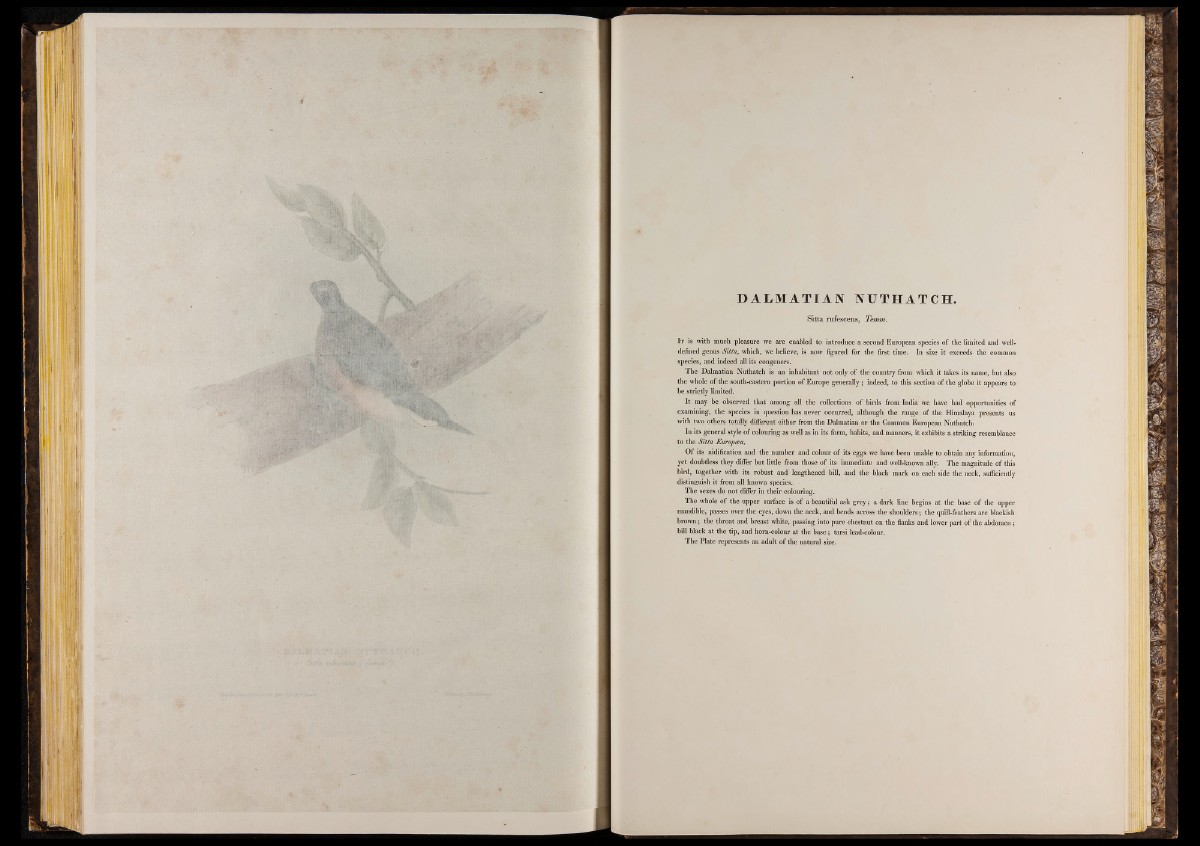
D A LM A T I A N N U TH A T C H .
Sitta rufescens, Temrn.
It is with much pleasure we are enabled to introduce a second European species of the limited and well-
defined genus Sitta, which, we believe, is now figured for the first time. In size it exceeds the common
species, and indeed all its congeners.
The Dalmatian Nuthatch is an inhabitant not only of the country from which it takes its name, but also
the whole of the south-eastern portion of Europe generally; indeed, to this section of the globe it appears to
be strictly limited.
It may be observed that among all the collections of birds from India we have had opportunities of
examining, the species in question has never occurred, although the range of the Himalaya presents us
with two others totally different either from the Dalmatian or the Common European Nuthatch.
In its general style o f colouring as well as in its form, habits, and manners, it exhibits a striking resemblance
to the Sitta Europcea.
Of its nidification and the number and colour of its eggs we have been unable' to obtain any information,
yet doubtless they differ but little from those of its immediate and well-known ally. The magnitude of this
bird, together with its robust and lengthened bill, and the black mark on each side the neck, sufficiently
distinguish it from all known species.
The sexes do not differ in their colouring.
The whole of the upper surface is of a beautiful ash grey: a dark line begins at the base of the upper
mandible, passes over the eyes, down the neck, and bends across the shoulders; the quill-feathers are blackish
brown; the throat and breast white, passing into pure chestnut on the flanks and lower part of the abdomen;
bill black at the tip, and horn-colour at the base; tarsi lead-colour.
The Plate represents an adult of the natural size.